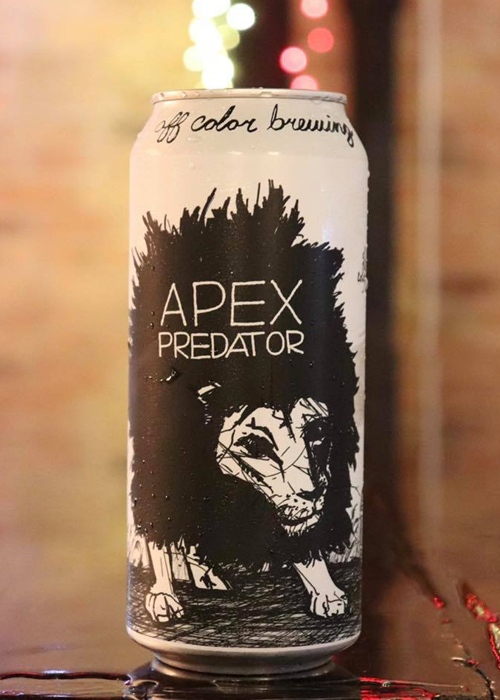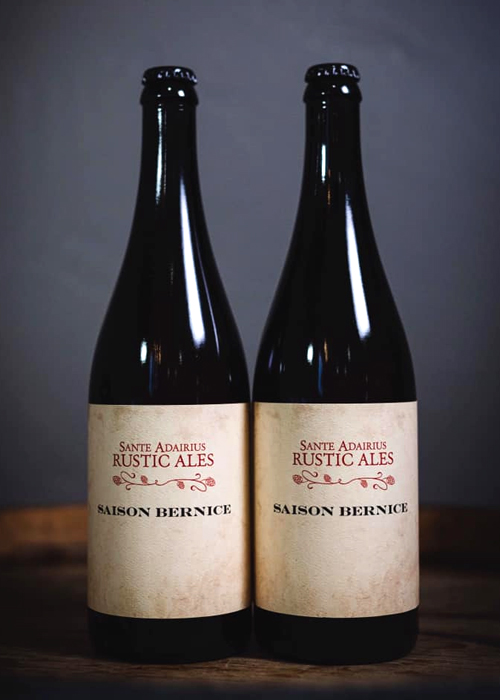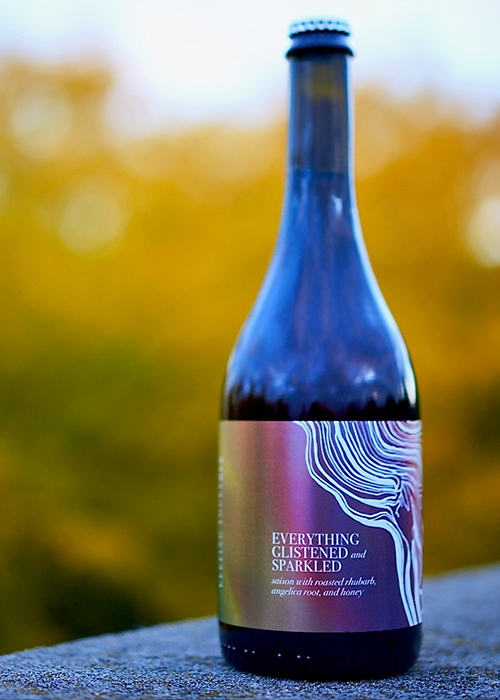In American craft beer, novelty reigns supreme. Given the choice between a straightforward interpretation of any style and a beer that contains any number of given variables (adjuncts, double dry-hopping, fruit, etc.), the craft beer consumer has shown a proclivity toward the latter. Maybe nowhere is this more accurate than the alchemy of barrel aging, which is notable particularly in big, chewy, and sweet stouts.
In the less understood realm of farmhouse ales, barrel aging brings a degree or flair and nuance in contrast with its stainless-steel counterparts. One seems unique, esoteric, and fancy. The other seems, well, boring.
For “people in the U.S. beer scene,” says Averie Swanson of Chicago’s Keeping Together, “the trends have shown the consumers are looking for more intense flavors. [In a barrel-aged beer] they’re more likely to end up with more aggressive acidity. It could be a psychological thing for consumers. Then, of course, they sell better.”
To Swanson, the core belief that the alchemy of barrel aging adds more complexity and nuance to a mixed-fermentation beer is a slight misnomer.
“It’s definitely possible to achieve an interesting [fermentation] profile without oak,” she says. “While I enjoy oak flavors, I don’t need it in my beer. I really think you can achieve a desired fermentation profile [in stainless steel] that doesn’t need augmentation.”
In other words, where wood adds pronounced flavor and texture to saison-style beers, stainless steel more clearly demonstrates the mixed-fermentation technique, and allows the yeast’s work to really shine.
(That said, not all great stainless-steel saisons are a product of a mixed fermentation. The flagship of Chicago’s Off Color Brewing, Apex Predator, is a dry-hopped saison fermented with a traditional brewer’s yeast called Saccharomyces cerevisiae or Blaugies 3726. It’s also a perfect beer for #SaisonSaturday.)

If farmhouse ales are the forest, saison is a large tree with branches and limbs that extend outward from its center, and depart farther away from its roots with every variation. Though often used interchangeably, all saisons are farmhouse ales, but not all farmhouse ales are saisons. Some are barrel-aged to add a level of layer of oaky complexity or to let the oxidation levels slowly affect the texture of a beer; others reach their prime condition in stainless steel alone.
“[Stainless-steel fermentation] can offer a unique and different perspective on a style that can be very broad,” Tim Clifford, the co-owner and -operator of California’s Sante Adairius Rustic Ales, says. “What I like about it is the flavors are a little more associated with traditional saison. Barrel aging creates a different type of complexity.”
Saison can be pigeonholed inaccurately to be perceived as simple Belgian beers with peppery spices and flavors imparted by a slightly polarizing saison yeast. In barrels, the extra oxidation and flavors imparted by oak (and, in many instances, what the barrel housed previously) can create a fine line between a saison and, well, something else.
Clifford feels the difference most acutely with Sante Adairius’s flagship, Saison Bernice, which he ferments low at 66 degrees Fahrenheit (saison yeast can be pushed into the 70s, 80s, or even 90s). When he adds their mixed culture, Clifford pushes the temperature to 68 to 70 degrees. He does this out of preference. To get a bit nerdy, Clifford says he prefers the ester profile of their saison yeast at that lower temperature, especially when it interacts with their house culture. The result is a cleaner base and a better beer.
“The quality of [Bernice] is that it is a beer with more body, different aromatics more akin to saison,” he says. “In our case, the yeast pulls out a lot of stone fruit.”
Of course, not all saisons are sour, which leads to misinterpretation of Bernice and other saison beers. “What’s interesting about Bernice is how many assume it’s barrel-aged,” Clifford says. “A lot of people just assume that if it’s tart or sour it’s barrel-aged.”

Cold, Hard Control
At Keeping Together, Swanson and her developing culture are “learning how to work together,” she says. So far, all Keeping Together beers have been fermented in stainless. The primary reason for this is control. Swansons says there are “bacteria and Brett in the culture as well as Saccharomyces.”
“Right now in this moment, I have been more interested in a slightly more controlled environment,” Swanson says. “This culture and I are learning how to work together. I like having things in stainless because I can make adjustments.”
While the unpredictability of oak aging with mixed cultures is perhaps its inherent romance, it’s not what Swanson is going for with Keeping Together. In oak barrels, she says, a beer’s outcome, while somewhat under her control, is a little less certain (though she’s quick to mention there are brewers, such as St. Louis’s Side Project, that do oak really, really well).
“You can know your barrels,” Swanson says, “but there are more variables: more aggressive acidity, more intense flavors. In my beers, I’m never looking for intense anything.
Clifford’s experience crafting farmhouse ales in stainless steel is similarly rewarding. “We know from beginning to end, we’re gonna get something good,” he says. “This is about yeast. You need to be open to things. It’s about time. It’s the same with beer. If we’re using analogies and metaphors. We’re giving these things ample time to come into their own. These are beers to have with meals, and share with friends.”
So why, then, should a drinker scanning the shelves for the perfect bottle of saison to take home for dinner opt for one that’s not barrel-aged?
“I think it really provides the drinker with an experience of what that yeast culture does,” says Swanson. “Oak barrels can be considered an ingredient, but they’re not required to make really interesting saisons.”

Five Mixed-Culture Saisons to Try (That Aren’t Barrel-Aged)
The following mixed-culture saisons are fermented in stainless steel — meaning each reaches its height of flavor and complexity without ever touching oak.
Oxbow Blue Noir
ABV: 7%
Few, if any, brewers are doing mixed fermentation like Newcastle, Maine’s Oxbow. This bright red mixed-fermentation farmhouse ale is made with Maine blueberries and Pinot Noir grape juice.
Sante Adairius Saison Bernice
ABV: 6.5%
The stalwart of the Santa Cruz farmhouse factory is Saison Bernice, which the folks over at SARA call “the purest expression of both our brewing philosophy and our house culture.”
Keeping Together Everything Glistened and Sparkled
ABV: 6%
Swanson’s Angelica root, roasted rhubarb, and honey saison is “balanced, dry, and effervescent,” Swanson says.
Hill Farmstead Arthur
ABV: 6%
The use of both European and American hops makes this flagship farmstead ale a beautiful, balanced saison experience from one of the world’s best breweries.
Jester King Le Petit Prince
ABV: 3.9%
Nothing gets us more excited than a complex, flavorful farmhouse ale — or beer —that is made under 4 percent alcohol. Luckily for us, the Austin, Texas-based mixed-fermentation kings have us covered with Le Petit Prince.
Honorable Mention: Saison Dupont
ABV: 6.5%
It is against saison etiquette to make a list of saisons to drink and not have this classic appear. If you haven’t had it, go buy one now. If you have, you should still probably go buy one now.
